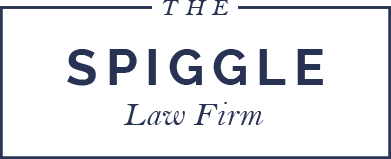
Ideally, an employer has policies in place to discourage sexual harassment. If a claim is reported, the company should investigate and take appropriate steps if it determines that harassment took place. In Smith v. Rock-Tenn Services, Inc., a recent case decided by the U.S. Court of Appeals for the Sixth Circuit, the court laid out how the employer botched this kind of situation and how a number of employees, and the plaintiff in particular, suffered as a result.
Table of Contents
ToggleLeonard: The Co-Worker From Hell

The workplace can be a mix of personalities, and sometimes that mix is toxic. A co-worker may have problems respecting boundaries and others’ personal space to a possibly pathological extent. That person very well might be Jim Leonard.
The plaintiff in this case, Jeff Smith, worked for a company that made boxes of corrugated cardboard, Rock-Tenn Services, in Murfreesboro, Tennessee. He had a number of duties but basically worked as a support technician on a die-cutter machine that his co-worker, Clinton Gill, operated. Four months after starting work, he met Leonard, who came back to work after a medical leave, and Smith’s life changed.
Smith’s introduction to Leonard was watching him walk up behind Gill, grab his butt, and then sniff his finger. Not sure what was going on, Smith would briefly talk to Leonard when necessary. Then Smith became one of Leonard’s targets.
- Leonard came by Smith’s workstation and “slapped him on the tail as he went by.” Smith warned Leonard that he better “keep his hands off.”
- About a week later, Leonard grabbed Smith’s butt so hard that it became sore. Smith grabbed Leonard by the arm and again warned him to stop, cautioning that “you’re going to cause somebody to get hurt in here.”
- A month later, Leonard walked up behind Smith, who was bent over loading boxes onto a pallet, grabbed his hips, and began simulating anal sex. Leonard’s “privates” were “up against” Smith’s butt, according to evidence in the case. Smith quickly turned around, grabbed Leonard by the neck, lifted him from the ground, and cursed him out.
Smith stated that he was aware of the company’s harassment policy and he followed it. The policy required the victim of harassment to tell the harasser to stop before filing a complaint. After the third incident, Smith was so upset that Gill sent him home. Smith told a co-worker what happened and he told the plant superintendent, Scott Keck.
At a daily safety meeting, Smith directly informed his supervisor, who stated that Leonard had “done . . . this again.” Then Smith told Keck about the incidents, and the company’s mishandling of the complaint began.
- Keck claimed nothing could be done for another 10 days, until Leonard’s supervisor returned from vacation.
- Smith was sent to the same area to continue working with Leonard, where he lasted about a week of being 10 to 15 yards from Leonard.
- Smith had a hard time concentrating, made mistakes, and worked more slowly and less efficiently than usual.
- He and Leonard were sent to get a hearing test together.
As a result, Smith started having anxiety attacks. He sent a letter to management describing the incidents involving Leonard, including allegations that Leonard had harassed others and that Leonard carried a knife with him and had pulled it on one of his other victims. Smith requested sick leave so he could receive counseling for the harassment, and the company granted his request.
According to the company, here is what happened in the meantime:
- Four managers had a meeting with Leonard.
- Leonard claimed he put his arm around Smith and Smith had then backed into him.
- Management interviewed other employees but could find no witness to the simulated sex incident.
- A manager testified that the company’s sexual harassment policy was “a guideline that could be followed” but not necessarily.
- No formal notes were taken during the investigation, and no report was prepared.
- Several managers recommended firing Leonard, but general manager David McIntosh decided on a two-day suspension. Management stated that the suspension was supposed to be unpaid, but Leonard stated that he was paid for the time he didn’t work.
- McIntosh didn’t know Leonard had been disciplined a few months earlier for identical conduct. A note in his personnel file stated that discipline was for “horseplay—sexual harassment” and warned that he needed to avoid any contact with employees that could be interpreted as sexual harassment because “[a]ny future complaints would be subject to termination of employment.”
- Leonard was eventually fired but only because, while the case was being litigated, he admitted he had “mooned” or inappropriately touched other men at work during a deposition.
Jury Finds Smith Had Been Sexually Harassed, and Rock-Tenn Appeals

The jury decided in favor of Smith, ruling that the company had failed to take appropriate measures in response to Smith’s complaint and Leonard’s behavior. The plaintiff was awarded $300,000. The company appealed, and the appellate court affirmed the lower court’s decision.
1. Rock-Tenn claimed Smith didn’t prove he was harassed because of his sex.
Smith alleged and proved Leonard targeted only male employees, and he admitted as much in his deposition. The U.S. Supreme Court has ruled in cases of same-sex harassment that one way to establish a claim is through “direct comparative evidence about how the alleged harasser treated members of both sexes in a mixed-sex workplace.” About 30% of the workforce was female.
2. Rock-Tenn argued that Leonard’s behavior was just “horseplay.”
The appellate court ruled that it was reasonable for the jury to conclude that “pinching and slapping someone on the buttocks or grinding one’s pelvis into another’s behind goes far beyond horseplay.”
3. Rock-Tenn suggested that Leonard’s conduct was not sufficiently severe or pervasive to create an objectively hostile environment.
The company had a hard time finding other cases where multiple incidents of “physical invasion” with multiple victims over a short period weren’t considered a hostile environment. The appellate court did find cases supporting the plaintiff, and since whether harassing conduct is “severe or pervasive” is “a question of fact,” the court decided to defer to the jury because its conclusion was not unreasonable.
4. Rock-Tenn contended that Smith failed to show it “knew or should have known of the harassment” and “failed to take prompt and appropriate corrective action.”
Here, the court applied the standard of liability for co-worker harassment claims: Smith had to show that his employer knew or should have known of the harassment and failed to take prompt and appropriate corrective action, which means a response “reasonably calculated to end the harassment.” The appellate court found the plaintiff had established this element.
Rock-Tenn’s incompetence and disregard for the law cost it the case. Smith followed his employer’s harassment policy by reporting what had happened. The court pointed out that at issue was not only what the employer did in response to the harassment complaint but also what it failed to do. Specifically, the appellate court pointed out the following facts:
- The plant superintendent told Smith that nothing could be done because one particular person was on vacation.
- Smith was sent back to work in close proximity to Leonard.
- Verbal complaints didn’t result in an investigation; the investigation started only when Smith wrote a letter and requested medical leave.
- Management “apparently took (Leonard) at his word,” even though his inappropriate actions were well known in the workplace.
- Management admitted that it didn’t follow its own policies, seeing them as just optional guidelines.
- No formal report was created after the investigation; all that was created were handwritten notes.
- The investigation found red flags concerning Leonard’s treatment of co-workers that were not followed up on, including similar behavior involving other employees.
- Not all interviews were recorded in writing.
- The managers investigating Smith’s claims did not communicate with the manager who imposed discipline, resulting in much more lenient discipline than Leonard’s own personnel file would have supported.
The appellate court wrote that “a reasonable jury could find that the failure to take any of these steps or others rendered its response neither prompt nor appropriate in light of what it knew or should have known regarding Leonard’s prior misconduct.”
Summing It Up
To avoid liability, an employer needs to do more than just go through the motions of responding to and investigating a sexual harassment complaint.
- Management needs to take sexual harassment complaints seriously, especially in a case like this when the alleged harasser’s actions triggered threats and violence from the victim (and the harasser may have carried a weapon that he reportedly showed to another harassment victim).
- The investigation should be done competently and professionally. It should be complete and documented. If a company isn’t up to the task, it can hire an outside attorney or human resources consultant to do the job.
- Policies need to be followed, and witnesses shouldn’t just be taken at their word.
- The employer must take prompt, appropriate corrective action reasonably calculated to end the harassment.
If you are the victim of workplace sexual harassment, contact our office with any questions about the law, about how it may be applied in your situation, and about the best ways to protect yourself and your legal rights.





